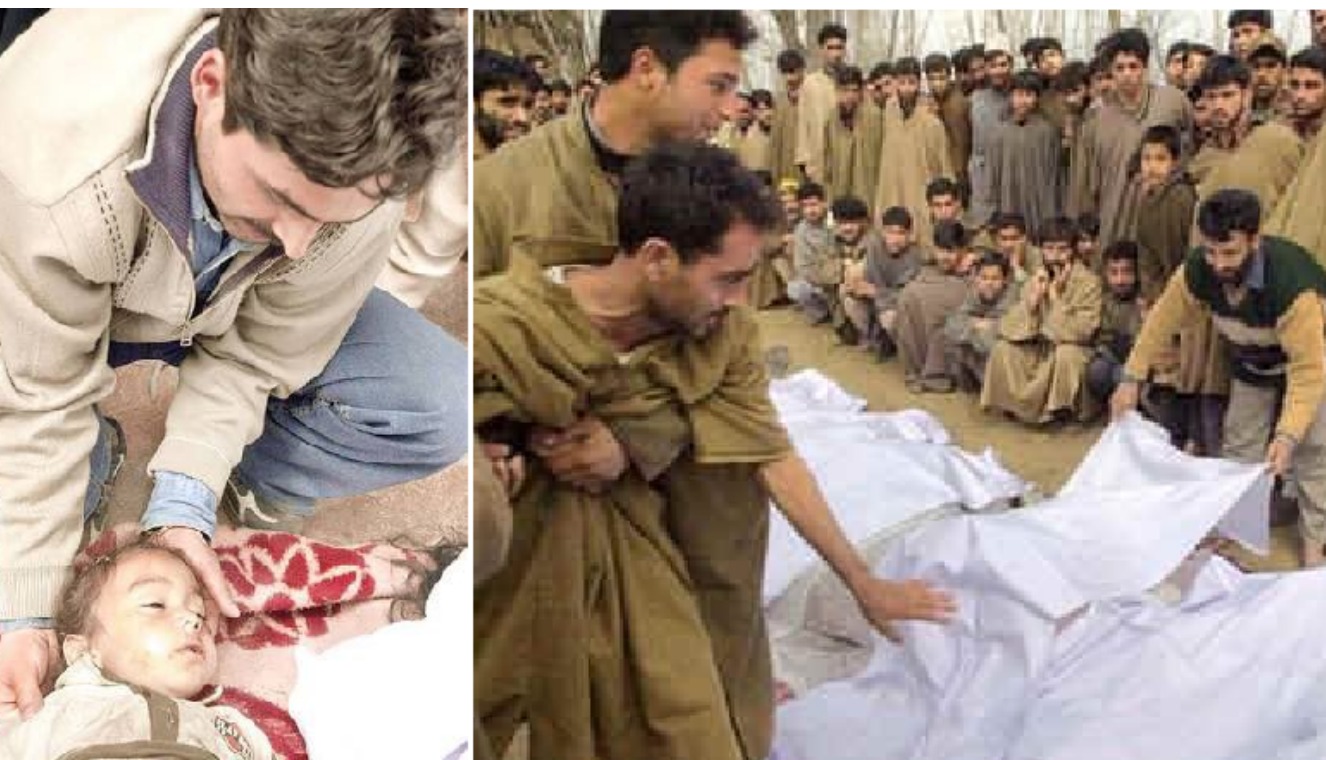The Kashmir Files is a compelling cinematic masterpiece. It is a powerful and moving film that tells the story of the Kashmiri Pandit exodus in a way that is both heartbreaking and eye-opening. The film does an excellent job of portraying the violence and terror that the Kashmiri Pandit community faced. Unlike other movies, it does not shy away from showing the horrific atrocities that were committed against the minuscule community.

Image Source: Aditya Raj Kaul (Twitter)
The film The Kashmir Files has been criticized for being one-sided, as it does not highlight the stories of local Muslims. However, the film’s intention is clear: to bring attention to the suffering of the minority Hindu community in Kashmir.
The article discusses the significance of the film and its portrayal of the truth, arguing that it can help to create awareness and foster a better understanding of the painful realities faced by Kashmiri Pandits.
Historical Context of the Plight of Kashmiri Pandits
The Kashmiri Pandits, a Hindu minority community in Kashmir, were subjected to targeted threats, killings, and attacks by various militant groups advocating for Kashmir’s independence or its merger with Pakistan. This climate of fear and violence forced a large number of Kashmiri Pandits to flee their homes and seek refuge in other parts of India. This displacement resulted in the loss of their traditional way of life and the destruction of their community.
The Kashmiri Pandits left the valley in 1990 to escape the unabated terrorism that was directed towards the minority community. They thought it would be a temporary measure, but a few days turned into months, months turned into years, and years turned into decades. During this time, the situation in the valley only worsened, and in 2021, a second migration of Kashmiri Pandits from the valley took place.
Uprooted and Forlorn
“The Kashmiri Pandits were abandoned to their fate in squalid refugee camps, while the army and the insurgents fought over their homeland. They were left to dream of a return to their homes, but many died before they could see their dream come true. Some even died after their dream of return had died, so that they could no longer even dream of it. Why did this happen? Why were the Kashmiri Pandits left to suffer so? Why was their dream of return denied?
Read more in Uprooted and Forlorn: The Tale of Kashmiri Pandits in Exile
Quoting Salman Rushdie in Shalimar the Clown “The pandits of Kashmir were left to rot in their slum camps, to rot while the army and the insurgency fought over the bloodied and broken valley, to dream of return, to die while dreaming of return, to die after the dream of return died so that they could not even die dreaming of it, why was that, why was that, why was that, why was that, why was that.
Understanding the Kashmir Files
The cinematic realm has the power to shed light on historical events, bringing to light stories that have been buried for centuries. The Kashmir Files is one such film that seeks to highlight the painful and forgotten plight of the Kashmiri Pandit community. While there is debate about the film’s perspective, its true significance lies in understanding it through the lens of a community that was displaced and left to fend for itself. The film’s focus on historical atrocities such as the Girija Tickoo incident and the Nadimarg Massacre is not only a brutal reminder for those who experienced it, but it also raises international awareness of a long-overlooked chapter in history.
Critical side of The Kashmir Files
Critics have debated whether The Kashmir Files presents a balanced view of the complex history of the region. However, the true importance of the film is not whether it is balanced or not. It is more important to explore the perspectives of those who were affected by the tragedy. The film provides a platform for the Kashmiri Pandit community to voice their pain and share their untold stories. It goes beyond mere entertainment and taps into the depth of human suffering.
The Movie Portrayal of Girija Tickoo and BK Ganjoo
Among the countless victims of the Kashmiri Pandit exodus, Girija Tickoo and BK Ganjoo stand as tragic symbols of the atrocities committed against the community. “TKF” bravely portrays their stories, bringing to the forefront the heart-wrenching reality faced by these individuals and their families. Their tragic fates serve as poignant reminders of the urgent need to acknowledge and address the untold suffering endured by Kashmiri Pandits.
Portrayal of Nadimarg Massacre
The portrayal of the Nadimarg Massacre in the Kashmir Files brings to life the brutality faced by the entire village of Nadimarg near Shopian. The heart-rending depiction of 24 innocent lives lost including the brutal killing of a baby torn apart emphasises the magnitude of the human tragedy faced by the Kashmiri Pandit community.
The Kashmir Files: Spreading awareness
As a powerful medium of storytelling, the Kashmir Files plays a significant role in spreading awareness about the plight of Kashmiri Pandits and the tragic events they endured. The film’s ability to evoke emotions and empathy in its audience can inspire positive change, fostering a more inclusive and harmonious society.
The Kashmir Files: Looking beyond Political Agendas
It is essential to recognize that while certain political agendas may attempt to manipulate the narrative around the Kashmir Files the film itself stands as a powerful testament to the importance of providing justice to Kashmiri Pandits. Instead of being divided along political lines, society should use the film as a common ground for discussion, empathy, and the pursuit of justice. Remembering the suffering of the Kashmiri Pandits should transcend political affiliations, serving as a reminder of the need to safeguard the rights and dignity of all citizens. It is unfortunate some political parties are only using The Kashmir Files as tool for scoring political brownie Points.
In a world often saturated with divisive rhetoric and conflicting narratives, The Kashmir Files emerges as a beacon of hope, spreading awareness and inspiring change through its evocative storytelling. While it is crucial to remain vigilant against the misuse of any form of art for political gains, it is equally important to recognize and celebrate the film’s genuine impact on promoting empathy, understanding, and unity. By acknowledging the suffering of the Kashmiri Pandit community and fostering a society that values inclusivity, “TKF” paves the way for a brighter, more harmonious future




Pingback: Unforgettable Pain: The Story of Girija Tickoo 1990 - The Forgotten Exodus: The Tragedy of Kashmiri Pandits